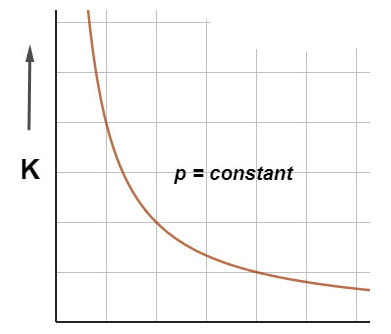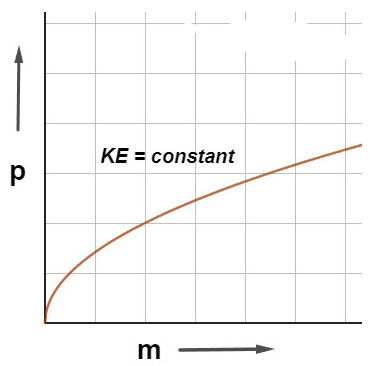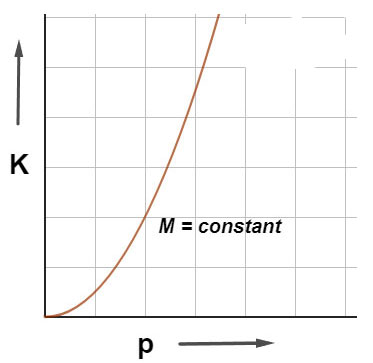Upgrade to get full access
Kumar Rohan
Physics and Mathematics
Relation between Kinetic Energy and Linear Momentum
If a body has a mass of $ \displaystyle m$ then,
$ \displaystyle \begin{array}{l}\text{K}\text{.E}\text{.}=\dfrac{1}{2}m{{v}^{2}}=\dfrac{1}{{2m}}{{m}^{2}}{{v}^{2}}\\\Rightarrow \text{K}\text{.E}\text{.}=\dfrac{{{{p}^{2}}}}{{2m}}\end{array}$
where $ \displaystyle p$ is the linear momentum of the body i.e. $ \displaystyle p=mv$
It shows that a body cannot have kinetic energy without having linear momentum and vice-versa.
Therefore, if momentum i.e. $ \displaystyle p$ is constant the graphical representation of kinetic energy and mass is

Similarly, if kinetic energy is constant, the graphical representation of kinetic momentum and mass is

and if mass is constant, the graphical representation of kinetic energy and momentum is
